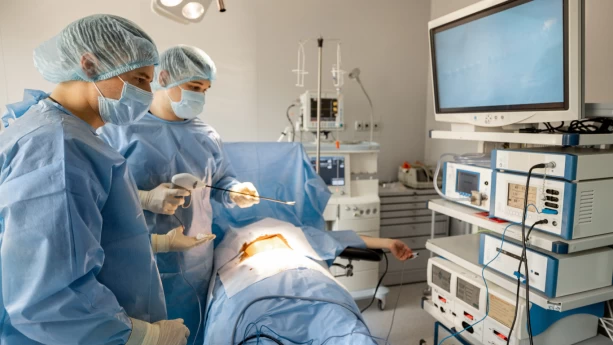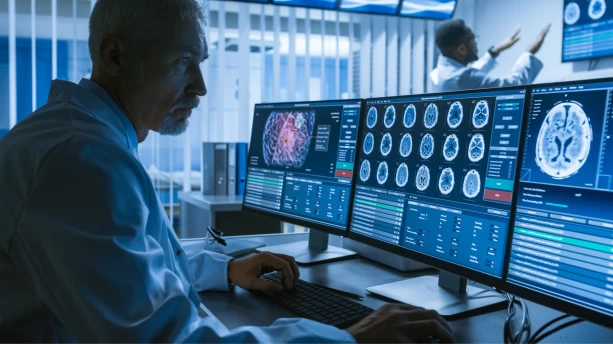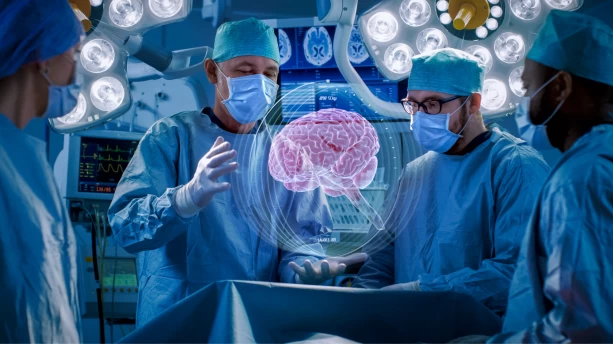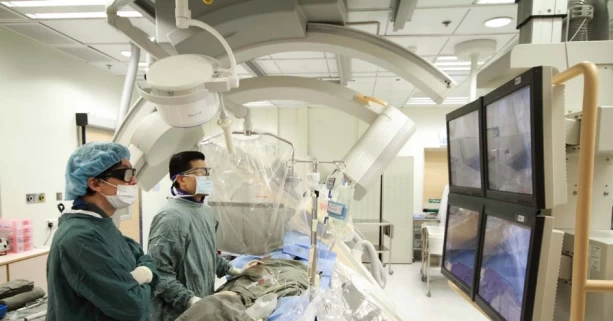CLINICAL RESEARCH

Abstract
The tissue integration and the formation of adhesions in the repair of abdominal wall defects are principally led to the topology and the mechanical properties of implanted prosthesis. In this study we analyzed the influence of the topology of the meshes for abdominal wall repair, made of polypropylene (PP), evaluating its ability to prevent and to minimize the formation of adhesions, and to promote tissue ingrowth. Two series of in vivo studies were performed. In the first, two types of PP meshes, a lightweight macroporous mesh (LWM) and a heavyweight microporous mesh (HWM) were compared with determine the optimal porosity for tissue integration. In the second, a composite mesh, Clear Mesh Composite (CMC), made of a LWM sewn on a PP planar smooth film, was compared with a PP planar film, to demonstrate how two different topologies of same material are able to induce different tissue integration with the abdominal wall and different adhesion with internal organs. In both studies, the prostheses were implanted in Wistar rats and histological analysis and mechanical characterization of tissue coupled with the implants were performed. LWM showed better host tissue ingrowth in comparison to HWM. CMC prosthesis showed no adhesions to the viscera and no strong foreign body reaction, moreover its elasticity and anisotropy index were more similar to that of natural tissue. These results demonstrated that the surface morphology of PP surgical meshes allowed to modulate their repair ability. © 2015 Wiley Periodicals, Inc. J Biomed Mater Res Part B: Appl Biomater, 104B: 1220-1228, 2016.
Keywords: histological analysis; in vivo study; mechanical properties; polypropylene mesh; surface morphology.
See more
Abstract
Outcome of primary and incisional hernia repair is still affected by clinical complications in terms of recurrences, pain and discomfort. Factors like surgical approach, prosthesis characteristics and method of fixation might influence the outcome. We evaluated in a prospective observational study a cohort population which underwent primary and incisional laparoscopic hernia repair, with the use of a composite mesh in polypropylene fixed with absorbable devices. We focused on assessing the feasibility and safety of these procedures; they were always performed by an experienced laparoscopic surgeon, analyzing data from our patients through the EuraHS registry. Seventy nine procedures of primary and incisional hernia repair were performed from July 2013 to November 2015 at Santa Maria Regina degli Angeli Hospital in Adria (RO). All cases have been registered at the EuraHS registry ( http://www.eurahs.eu ); among them, we analyzed 29 procedures performed using a new composite polypropylene mesh (CMC, Clear Composite Mesh, DIPROMED srl San Mauro Torinese, Turin, Italy), fixed with absorbable tackers (ETHICON, Ethicon LLC Guaynabo, Puerto Rico 00969). We performed 23 incisional hernia repairs, 4 primary hernia repairs (1 umbilical, 2 epigastric and 1 lumbar hernia) and 2 parastomal hernia repairs. The median operation time was 65.1 min for elective and 81.4 min for urgent procedures (three cases). We had two post-operative complications (6.89%), one case of bleeding and another case of prolonged ileus successfully treated with conservative management. We had no recurrences at follow-up. According to QoL, at 12 months patients do not complain about any pain or discomfort for esthetic result. Laparoscopic treatment of primary and incisional hernia with the use of composite mesh in polypropylene fixed with absorbable devices is feasible and safe.
Keywords: Abdominal hernias; Absorbable tackers; Laparoscopy.
See more
Supraflex Cruz coronary stent is a medical device: Unique design with high biocompatibility without damaging the vessel wall, suitable for patients allergic to metals. The double helical structure helps the Stent to be flexible along the longitudinal axis while the cross-section is very sturdy. The surrounding sinusoidal spirals help the Stent avoid deflection and damage to the vessel wall.
See more
Supraflex Cruz coronary stent is a medical device: Unique design with high biocompatibility without damaging the vessel wall, suitable for patients allergic to metals. The double helical structure helps the Stent to be flexible along the longitudinal axis while the cross-section is very sturdy. The surrounding sinusoidal spirals help the Stent avoid deflection and damage to the vessel wall.
See more
Supraflex Cruz coronary stent is a medical device: Unique design with high biocompatibility without damaging the vessel wall, suitable for patients allergic to metals. The double helical structure helps the Stent to be flexible along the longitudinal axis while the cross-section is very sturdy. The surrounding sinusoidal spirals help the Stent avoid deflection and damage to the vessel wall.
See more

